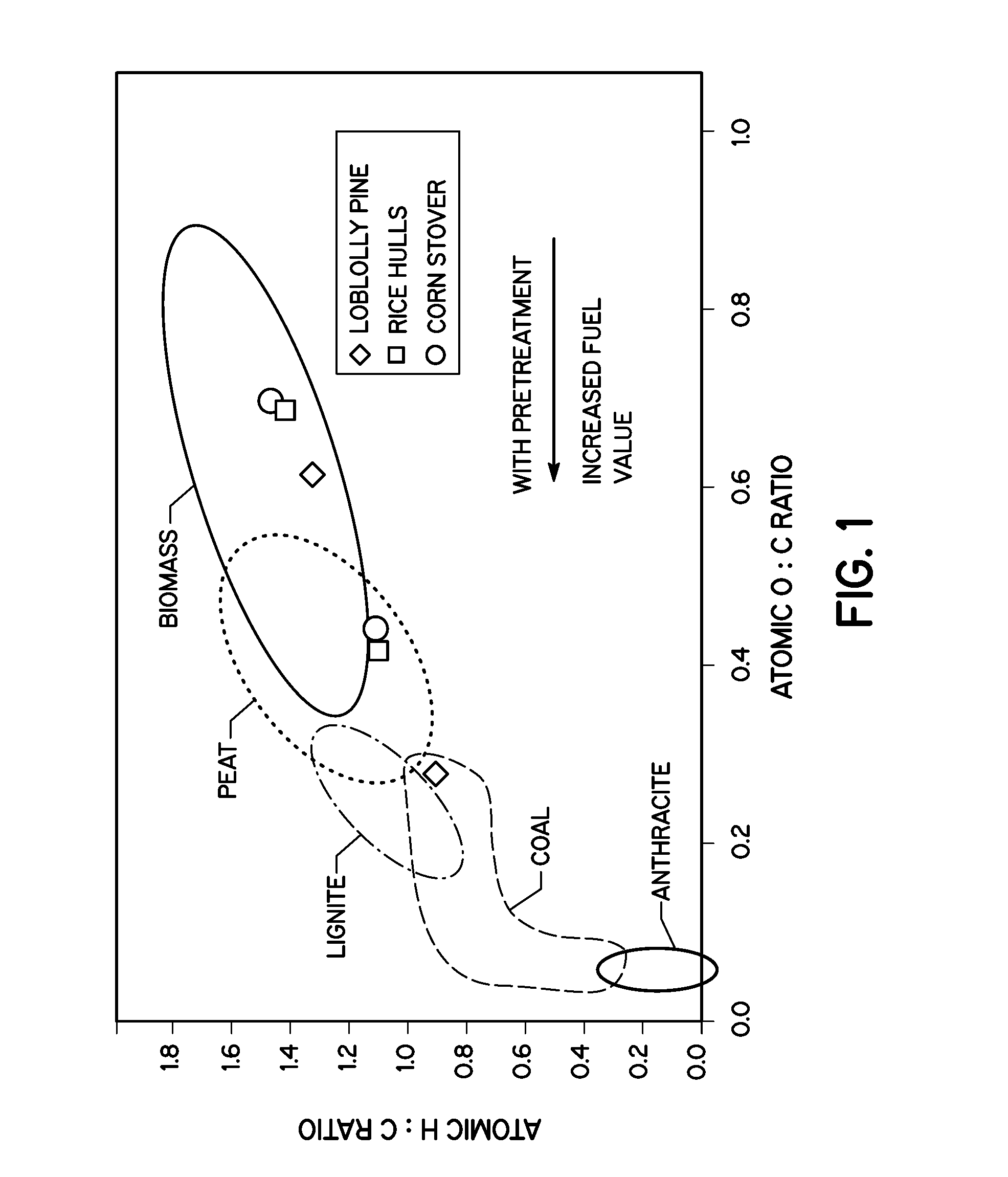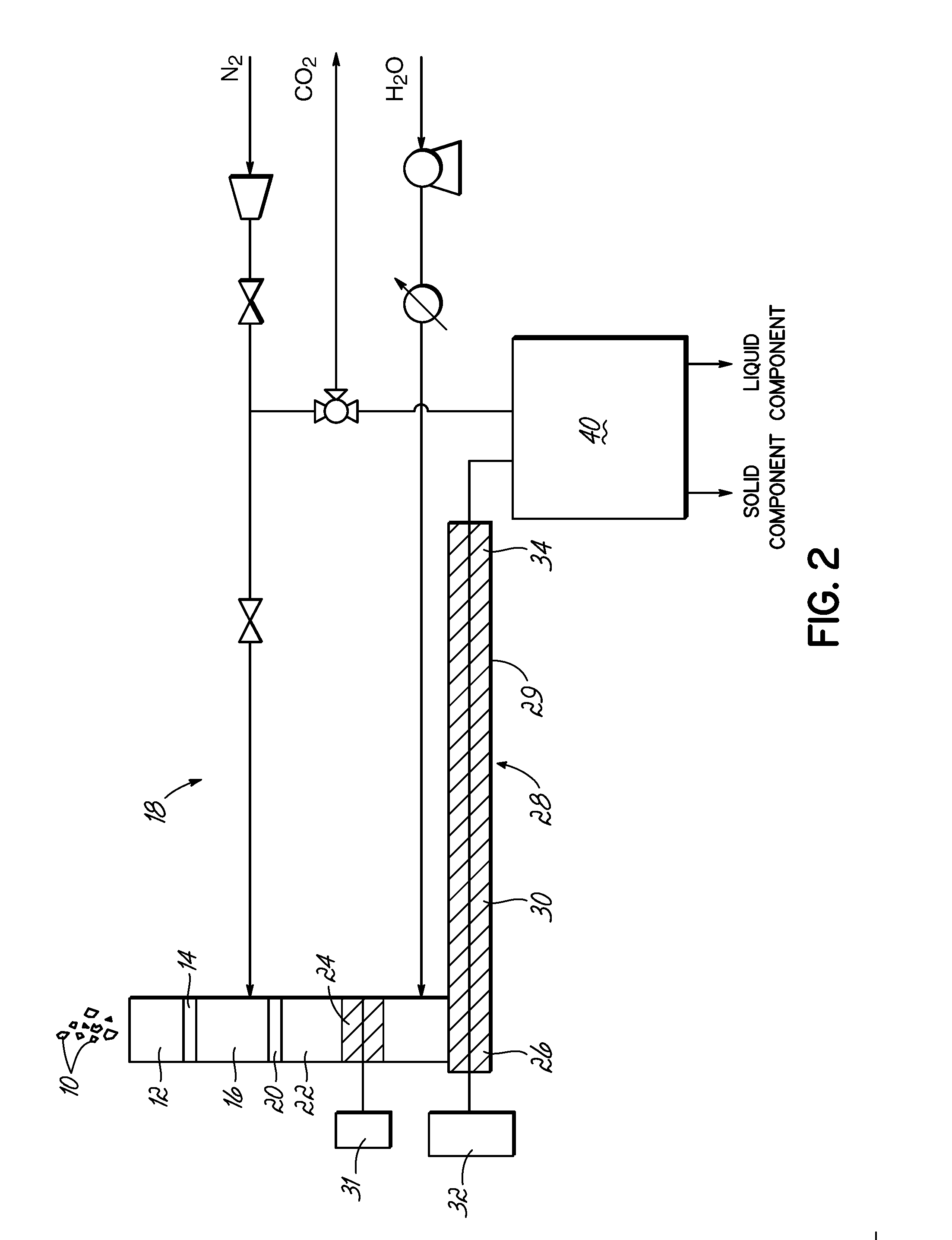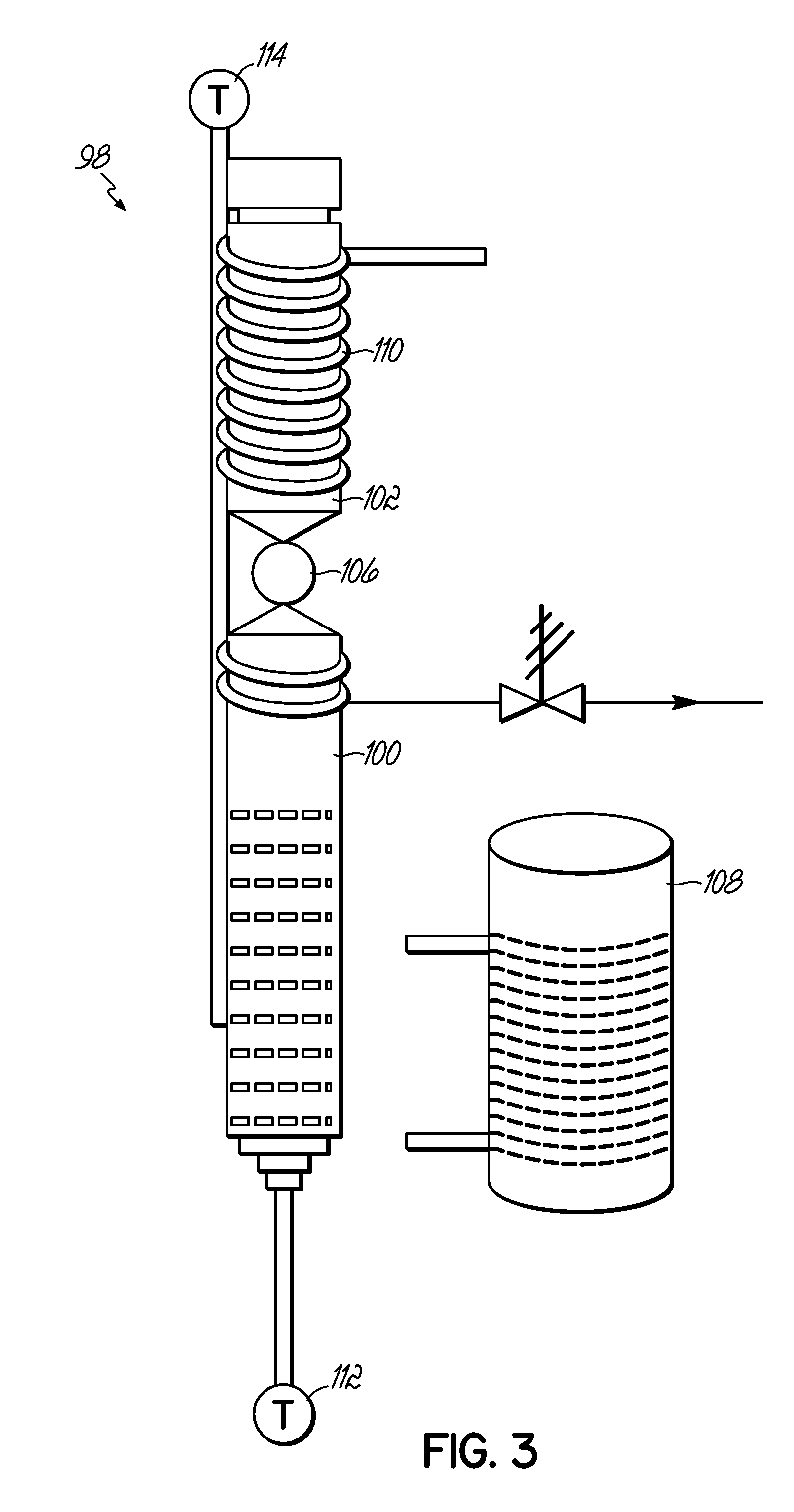Method for wet torrefaction of a biomass
a technology of biomass and wet torrefaction, which is applied in the direction of fuels, waste based fuels, combustible gas production, etc., can solve the problems of increasing the difficulty of processing and handling biomass treated with those processes, reducing the net energy yield of reacted biomass, and inapplicability of corn, so as to increase the mass and energy density of reacted biomass, and increase the mass and energy density
- Summary
- Abstract
- Description
- Claims
- Application Information
AI Technical Summary
Benefits of technology
Problems solved by technology
Method used
Image
Examples
example 1
Materials and Methods
[0043]Biomass—For wet torrefaction, loblolly pine (Alabama, USA) was used as lignocellulosic biomass. A biomass size of about 0.7 mm to about 0.3 mm was selected for this study.
[0044]Steel Mesh—Stainless steel mesh T316L 325 / 0014 48″ wide from TWP Inc. (Berkley, Calif.) was used for making the sample holder. A 2″×1.5″ dimension was needed for one sample holder, which weighs roughly about 0.4 g. A cylinder of 0.5″ diameter was made from that steel mesh to hold the sample of about 0.2 g biomass.
[0045]Wet Torrefaction—A special kind of two chambered reactor 98 was designed for this study and is shown in FIG. 3. It was made of 316 stainless steel. The bottom chamber 100 contained water in an inert atmosphere and underwent heating while the upper chamber 102 contained a stainless steel sample holder (not shown) filled with 0.2 g of biomass with a ball valve 106 separating chambers 100 and 102. The bottom chamber 100 had a volume of 20 ml while the upper chamber 102 h...
example 2
[0071]Transportation and handling of lignocellulosic biomass, such as wood, rice hulls, straw and switch grass, are often challenging as they have low bulk density, from the range of 60-80 kg / m3 for agricultural straws and grasses and 200-800 kg / m3 for woody biomass. Thermal or chemical pretreatment processes can produce a mass and energy dense product. The storage of biomass can be facilitated by pretreatment. Pelletization can also increase the mass and energy density of the biomass. It reduces the transportation costs and provides for better handling and feeding. The pelletization process significantly reduces dust formation and causes the product to have a common shape and size. A particular size may be necessary to feed into the boiler in the case of co-firing of biomass with coal. Lignocellulosic biomass pretreatment combined with pelletization potentially could improve storage for seasonal crops which are harvested only a few weeks in a year.
[0072]Two different thermal pretre...
PUM
 Login to View More
Login to View More Abstract
Description
Claims
Application Information
 Login to View More
Login to View More - R&D
- Intellectual Property
- Life Sciences
- Materials
- Tech Scout
- Unparalleled Data Quality
- Higher Quality Content
- 60% Fewer Hallucinations
Browse by: Latest US Patents, China's latest patents, Technical Efficacy Thesaurus, Application Domain, Technology Topic, Popular Technical Reports.
© 2025 PatSnap. All rights reserved.Legal|Privacy policy|Modern Slavery Act Transparency Statement|Sitemap|About US| Contact US: help@patsnap.com



